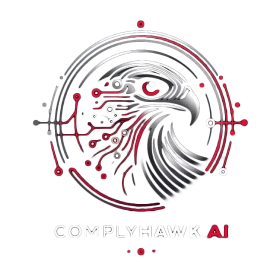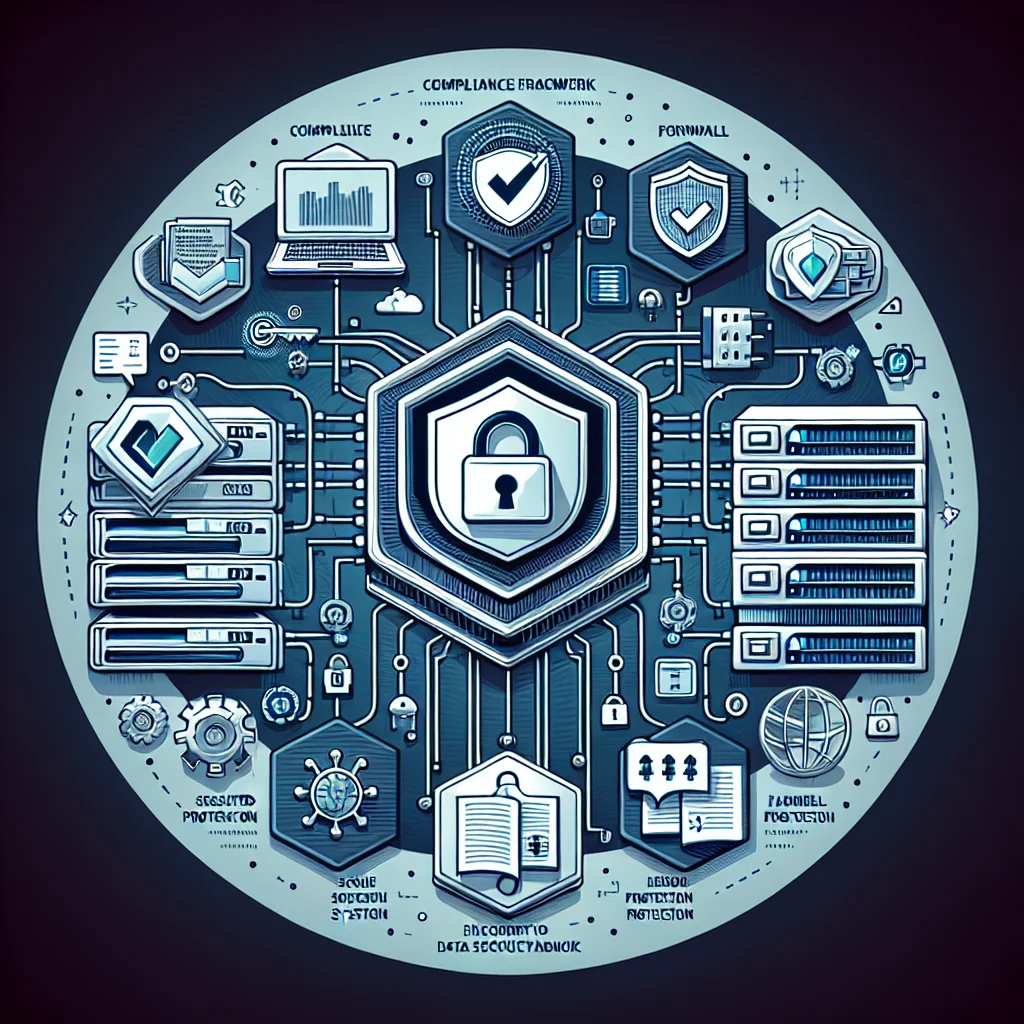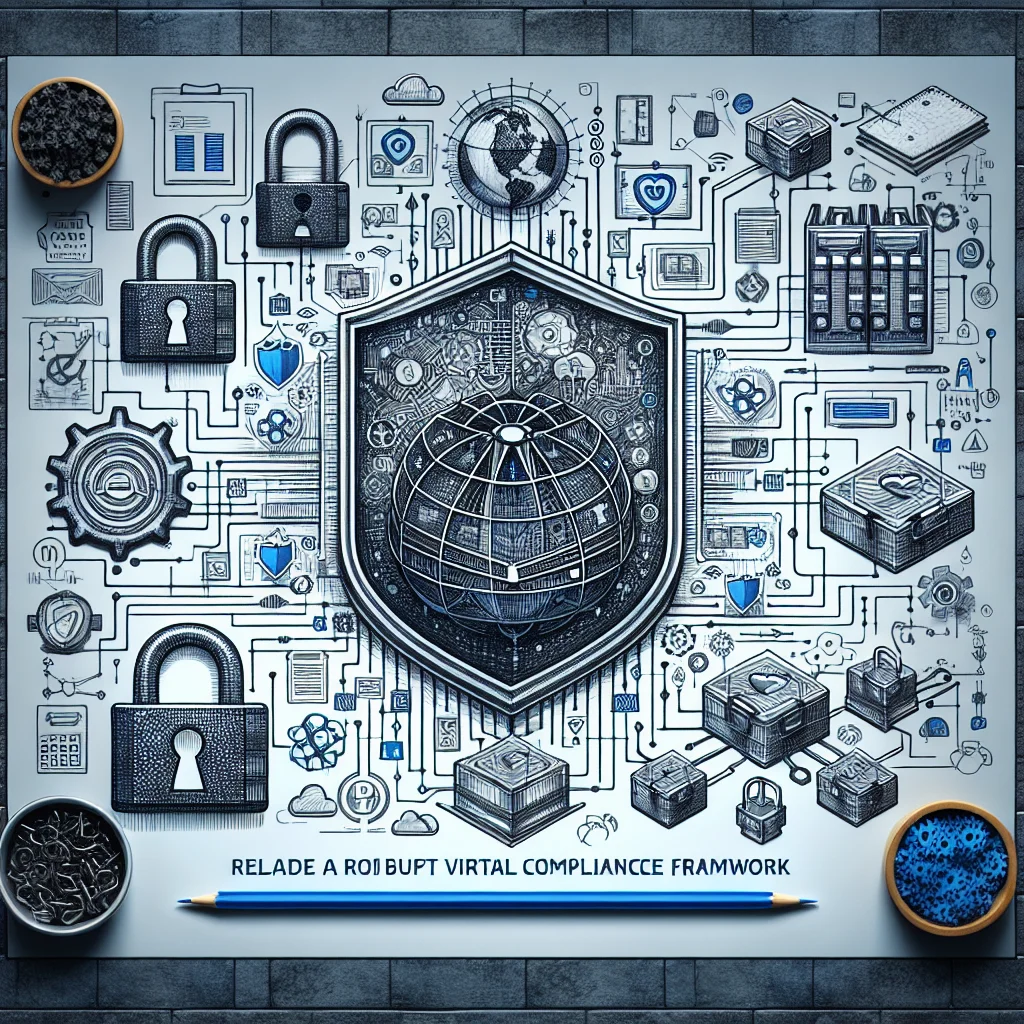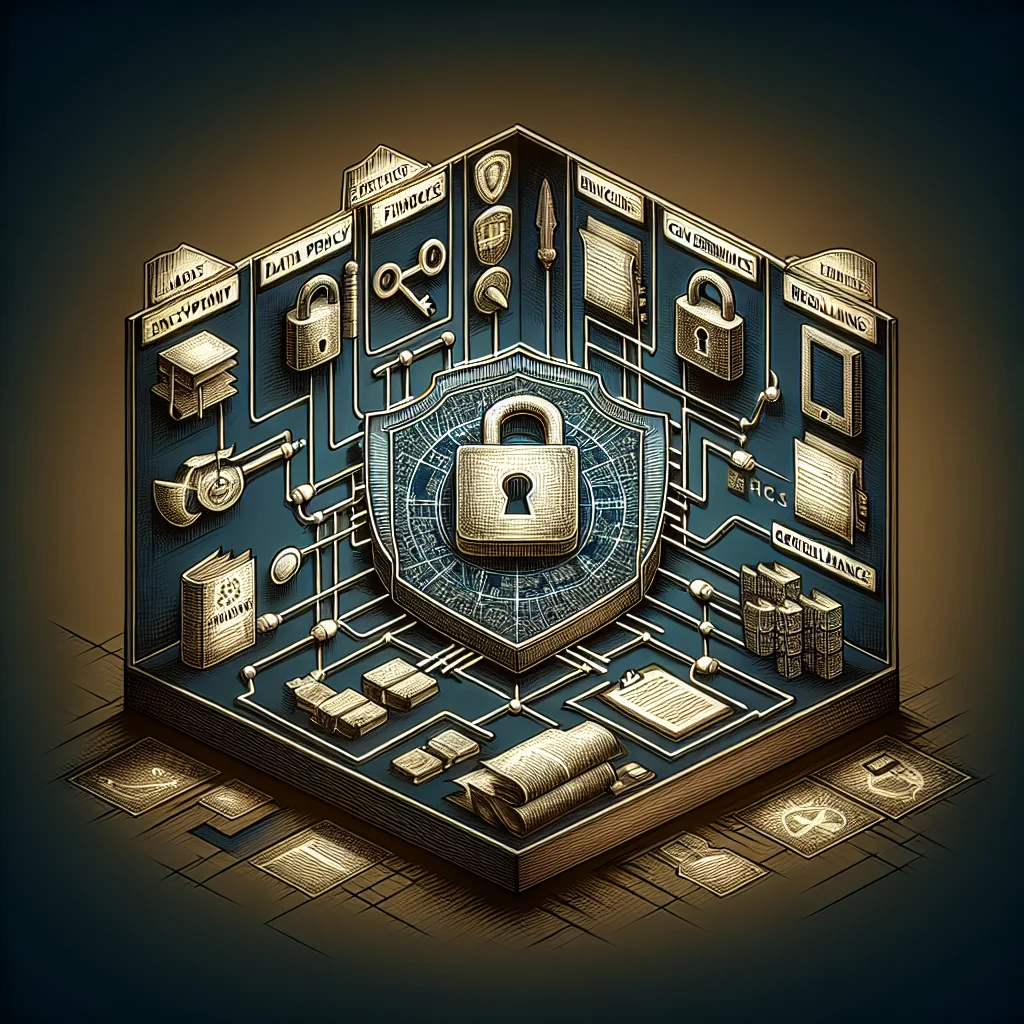In today’s digital age, where data breaches and cyber threats are becoming increasingly sophisticated, the importance of robust information security cannot be overstated. For organizations operating in the United Arab Emirates, compliance with the UAE Information Assurance (IA) framework is not just a regulatory requirement but a critical aspect of safeguarding their digital assets.
What is the UAE IA Compliance Framework?
The UAE IA framework is a comprehensive set of guidelines and standards designed to bolster the cybersecurity posture of organizations within the UAE. Developed by the UAE Telecommunications Regulatory Authority (TRA), this framework aims to ensure that organizations implement adequate controls to protect their information systems from cyber threats.
Who Needs to Comply with the UAE IA Framework?
The UAE IA framework is applicable to a wide range of entities, including:
- Government Agencies: Ensuring the protection of sensitive government data and maintaining public trust.
- Critical Infrastructure Providers: Sectors such as energy, water, transportation, and telecommunications are required to comply due to the potential impact of cyber threats on national security and public safety.
- Private Sector Organizations: Especially those handling sensitive information or providing essential services to the public.
Key Components of the UAE IA Framework
The UAE IA framework comprises several key components, each addressing different aspects of information security. These components include:
1. Governance and Management
Effective governance and management are fundamental to the successful implementation of the UAE IA framework. Organizations are required to establish a robust governance structure that includes:
- Information Security Policy: Developing and maintaining an information security policy that outlines the organization’s commitment to protecting its information assets.
- Risk Management: Implementing a risk management process to identify, assess, and mitigate information security risks.
- Roles and Responsibilities: Clearly defining roles and responsibilities for information security within the organization, ensuring accountability at all levels.
2. Asset Management
Asset management is crucial for maintaining an accurate inventory of information assets and ensuring their protection. Key requirements include:
- Asset Inventory: Maintaining an up-to-date inventory of all information assets, including hardware, software, and data.
- Classification and Labeling: Classifying and labeling information assets based on their sensitivity and criticality.
- Ownership and Accountability: Assigning ownership and accountability for information assets to specific individuals or departments.
3. Access Control
Access control measures are essential to prevent unauthorized access to information systems and data. Key access control requirements include:
- User Authentication and Authorization: Implementing strong authentication mechanisms and ensuring that users are granted access based on their roles and responsibilities.
- Least Privilege Principle: Ensuring that users have the minimum level of access necessary to perform their duties.
- Regular Access Reviews: Conducting regular reviews of user access rights to ensure compliance with the principle of least privilege.
4. Physical and Environmental Security
Physical and environmental security measures are critical for protecting information systems and data from physical threats. Key requirements include:
- Secure Areas: Establishing secure areas to house critical information systems and data.
- Environmental Controls: Implementing environmental controls such as fire suppression systems, temperature and humidity controls, and power backup systems.
- Access Control Measures: Implementing physical access control measures to restrict entry to secure areas.
5. Operations Management
Operations management focuses on the day-to-day management of information systems and security controls. Key requirements include:
- Change Management: Establishing a change management process to ensure that changes to information systems are properly authorized, documented, and tested.
- Backup and Recovery: Implementing backup and recovery procedures to ensure the availability of critical information and systems in the event of a disruption.
- Monitoring and Logging: Implementing monitoring and logging mechanisms to detect and respond to security incidents.
6. Incident Management
Effective incident management is crucial for identifying, responding to, and recovering from information security incidents. Key requirements include:
- Incident Response Plan: Developing and maintaining an incident response plan that outlines the organization’s approach to managing information security incidents.
- Incident Detection and Reporting: Implementing mechanisms for detecting and reporting information security incidents.
- Incident Investigation and Analysis: Conducting thorough investigations and analyses of information security incidents to identify root causes and implement corrective actions.
7. Compliance and Audit
Compliance and audit measures are essential for ensuring that organizations adhere to the requirements of the UAE IA framework. Key requirements include:
- Internal Audits: Conducting regular internal audits to assess compliance with the UAE IA framework.
- External Audits: Engaging external auditors to conduct independent assessments of the organization’s compliance with the UAE IA framework.
- Continuous Improvement: Implementing a continuous improvement process to address audit findings and enhance the organization’s information security posture.
Commonly Asked Questions by CISOs
1. What are the key differences between the UAE IA framework and other international standards like ISO 27001?
While the UAE IA framework shares similarities with international standards like ISO 27001, it is tailored to the specific regulatory and cultural context of the UAE. Some key differences include:
- Regional Focus: The UAE IA framework is specifically designed to address the unique cybersecurity challenges faced by organizations in the UAE.
- Legal Requirements: Compliance with the UAE IA framework may involve additional legal requirements specific to the UAE, such as the UAE Cybercrime Law and the Personal Data Protection Law.
2. How can organizations effectively implement the UAE IA framework?
Effective implementation of the UAE IA framework requires a holistic approach that includes:
- Senior Management Support: Securing buy-in and support from senior management to ensure the necessary resources and commitment.
- Comprehensive Risk Assessment: Conducting a thorough risk assessment to identify and prioritize information security risks.
- Employee Training and Awareness: Providing regular training and awareness programs to educate employees about their roles and responsibilities in information security.
3. What are the common challenges organizations face when complying with the UAE IA framework?
Some common challenges include:
- Resource Constraints: Limited resources and budget constraints can hinder the implementation of comprehensive security measures.
- Complex Legal Landscape: Navigating the complex legal and regulatory landscape in the UAE can be challenging for organizations.
- Rapid Technological Changes: Keeping up with rapid technological advancements and emerging cyber threats requires continuous monitoring and adaptation.
Common Controls Between Frameworks
Several controls are common across various cybersecurity frameworks, including the UAE IA framework and international standards like ISO 27001 and PCI DSS. Here are some key controls along with their specific clause references and comparisons with GDPR:
- Risk Management: Both ISO 27001 (Clause 6.1) and PCI DSS (Requirement 12.2) emphasize implementing a risk management process to identify, assess, and mitigate information security risks. GDPR also highlights the importance of risk assessment in Article 32.
- Access Control: ISO 27001 (Annex A.9) and PCI DSS (Requirement 7) establish access control measures to prevent unauthorized access to information systems and data. GDPR’s Article 25 promotes data protection by design, which aligns with access control principles.
- Incident Management: ISO 27001 (Clause 16) and PCI DSS (Requirement 12.10) emphasize the development and maintenance of an incident response plan to effectively manage information security incidents. GDPR mandates breach notification protocols in Articles 33 and 34.
- Compliance and Audit: ISO 27001 (Clause 9) and PCI DSS (Requirement 11) require regular internal and external audits to assess compliance with the relevant cybersecurity frameworks. GDPR also mandates regular audits and documentation to demonstrate compliance, as stated in Article 24.
While these frameworks share similarities in their focus on risk management, access control, incident response, and compliance, GDPR specifically emphasizes data protection principles and individual rights, which may not be as explicitly detailed in the other frameworks.
Key Steps to Implement IA Compliance
Step 1: Conduct a Risk Assessment
Before you can implement effective IA controls, you must understand the specific risks your organization faces. This involves:
- Identifying critical assets and data.
- Evaluating potential threats and vulnerabilities.
- Assessing the impact of potential security incidents.
Step 2: Develop a Comprehensive IA Policy
Your IA policy should outline the principles and guidelines for protecting information within your organization. Key components include:
- Defining roles and responsibilities.
- Establishing security protocols.
- Setting up incident response procedures.
Step 3: Implement Technical Controls
Technical controls are the backbone of any IA strategy. These controls include:
- Encryption to protect data in transit and at rest.
- Access controls to limit who can view or alter sensitive information.
- Regular software updates and patch management.
Step 4: Foster a Security-Aware Culture
IA compliance isn’t just about technology—it’s also about people. Ensure your team understands the importance of IA through:
- Regular training and awareness programs.
- Clear communication of policies and procedures.
- Encouraging reporting of suspicious activities.
Step 5: Monitor and Review Regularly
IA is not a set-and-forget endeavor. Regular monitoring and reviews are essential to maintain compliance:
- Conduct periodic audits to assess the effectiveness of your IA controls.
- Use automated tools to continuously monitor for potential security breaches.
- Adjust and update your IA policies as needed to address new threats and vulnerabilities.
Step 6: Engage with External Experts
Sometimes, internal resources may not be sufficient to handle IA compliance. This is where external expertise can be invaluable:
- Hire external auditors to provide an unbiased assessment of your IA controls.
- Work with consultants to develop and implement advanced security measures.
Conclusion
Implementing IA compliance in the UAE requires a structured and comprehensive approach. By following these steps, CISOs in the Middle East can protect their organizations from potential threats while ensuring compliance with regulatory requirements.
If your organization needs additional support, consider using ComplyHawk, an automated compliance platform designed to simplify the complexities of IA compliance. With ComplyHawk, you can streamline your compliance processes, ensuring that your organization remains secure and compliant.
Book a demo with ComplyHawk today, to find out more!
By taking proactive measures and leveraging the right tools, you can turn IA compliance from a daunting task into a strategic advantage for your organization.



